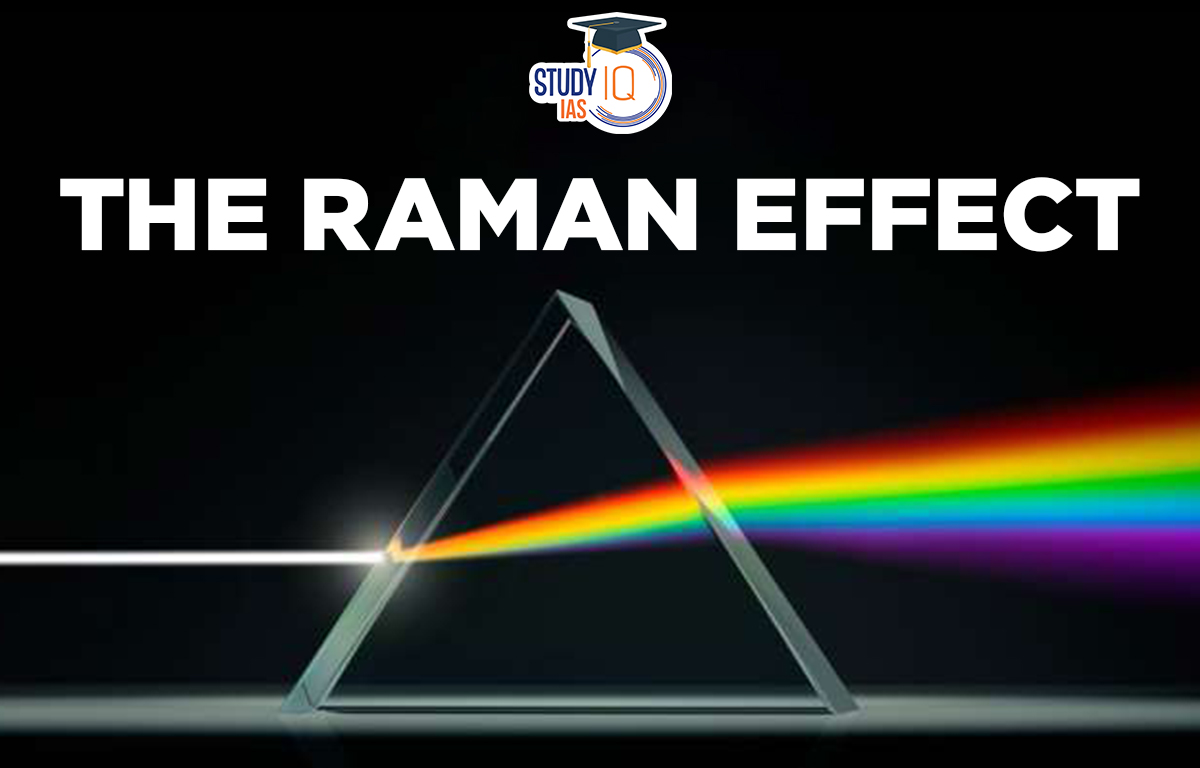Table of Contents
National Science Day is celebrated in India every year on February 28 to mark Sir Chandrasekhara Venkata Raman‘s discovery of the Raman Effect. This day is dedicated to recognizing the contributions of Indian scientists and promoting scientific temper among the masses. The Government of India designated February 28 as National Science Day in 1986, and since then, it has been observed across the country with various science-related events and activities.
What is the Raman Effect?
- The Raman Effect is a phenomenon discovered by Sir C.V. Raman in 1928.
- It involves light scattering by matter, specifically when photons interact with molecules.
- Unlike in Rayleigh scattering, where the scattered photon retains the same energy as the incident photon, in the Raman Effect, the scattered photon may gain or lose energy.
- This energy change corresponds to the vibrational or rotational states of the molecules.
- The resulting scattered light exhibits different frequencies, known as Raman shifts, which are characteristic of the molecular structure and vibrational modes of the sample.
- The Raman Effect provides insights into molecular structure, chemical composition, and material properties.
- It has applications in various scientific disciplines, including chemistry, physics, biology, and materials science.
- Some common applications include molecular identification, structural analysis, imaging and microscopy, environmental monitoring, and pharmaceutical analysis.
- Advances in instrumentation and signal-processing techniques continue to expand the capabilities and applications of the Raman Effect.
- Interdisciplinary collaborations drive innovation in Raman spectroscopy, leading to new discoveries and practical solutions to scientific challenges.
| Description | |
|---|---|
| Discovery | Discovered by Sir C.V. Raman in 1928 |
| Phenomenon | Involves the scattering of light by matter, where photons interact with molecules, causing energy changes in the scattered light |
| Types of Scattering | Rayleigh Scattering: Scattered photon retains the same energy as the incident photon
Stokes Scattering: Scattered photon has lower energy than an incident photon, corresponding to absorption of energy by the molecule’s vibrational mode Anti-Stokes Scattering: Scattered photon has higher energy than an incident photon, corresponding to the emission of energy by the molecule’s vibrational mode |
| Principles | Relies on quantum mechanics to explain the interaction between light and matter at the molecular level |
| Molecular Identification | Enables identification and characterization of molecules based on their unique Raman spectra |
| Structural Analysis | Provides insights into molecular structure, conformational changes, and material properties |
| Imaging and Microscopy | Allows for spatially resolved chemical imaging with high sensitivity and specificity |
| Environmental Monitoring | Used for in situ and remote sensing applications, such as monitoring pollutants and detecting contaminants in food, water, and the atmosphere |
| Pharmaceutical Analysis | Employed in drug development, quality control, and studying drug-protein interactions |
| Advancements |
|
| Future Perspectives | Continued expansion of capabilities and applications, driven by interdisciplinary collaborations and technological innovation |
Understanding Light-Matter Interaction
In classical physics, when light interacts with matter, it primarily follows two processes: absorption and emission. However, the Raman Effect introduces a third process: light scattering. When a photon interacts with a molecule, it can transfer energy to the molecule, causing it to vibrate. In most cases, the scattered photon retains the same energy (and thus the same frequency) as the incident photon. This is known as Rayleigh scattering, named after Lord Rayleigh, who first described it in the late 19th century.
The Raman Effect, however, involves a different outcome. Occasionally, the scattered photon changes energy due to the interaction with the vibrating molecule. This change corresponds to the difference in energy between the initial and final states of the molecule’s vibrational or rotational motion. As a result, the scattered light exhibits different frequencies, known as Raman shifts, which are characteristic of the molecular structure and vibrational modes of the sample.
Principles of the Raman Effect
The Raman Effect relies on the principles of quantum mechanics to explain the interaction between light and matter at the molecular level. When a photon interacts with a molecule, it perturbs the molecule’s electron cloud, leading to temporary distortions in the electron distribution. This induces electric dipole moments in the molecule, resulting in scattered light with altered frequencies.
The Raman scattering process can be categorized into two main types: Stokes and anti-Stokes scattering. In Stokes scattering, the scattered photon has lower energy (longer wavelength) than the incident photon, corresponding to the absorption of energy by the molecule’s vibrational mode. Conversely, in anti-Stokes scattering, the scattered photon has higher energy (shorter wavelength) than the incident photon, indicating the emission of energy by the molecule’s vibrational mode.
What are the Various Applications of the Raman Effect/Raman Spectroscopy?
- Chemistry: Raman spectroscopy is a powerful analytical tool used in chemistry to determine the molecular structure of compounds.
- Biology: It is also used in biology to study the structure and function of biological molecules, such as proteins, DNA, and RNA. It can be used to analyze cell components, diagnose diseases, and study metabolic processes.
- Materials Science: Raman spectroscopy is widely used in materials science to study the properties of materials, including polymers, semiconductors, ceramics, and metals.
- Pharmaceutical industry: Raman spectroscopy is used in the pharmaceutical industry to analyze drug formulations and to ensure quality control of the final products.
- Environmental science: Raman spectroscopy can be used to analyze the composition of environmental samples, such as air, water, and soil. It can also be used to monitor pollution and to study the properties of minerals.
- Forensic science: Raman spectroscopy is used in forensic science to identify and analyze trace evidence, such as fibers, paints, and drugs.
Future Perspectives
Advancements in instrumentation, such as the development of portable Raman spectrometers and enhanced signal processing techniques, continue to expand the capabilities and applications of the Raman Effect. Furthermore, interdisciplinary collaborations between physicists, chemists, biologists, and engineers are driving innovation in Raman spectroscopy, leading to discoveries and practical solutions to complex scientific challenges.
Conclusion
The Raman Effect stands as a testament to the profound insights that emerge from the intersection of quantum mechanics and spectroscopy. From unraveling the intricacies of molecular structure to enabling cutting-edge technologies in diverse fields, the Raman Effect continues to inspire scientific inquiry and technological innovation, shaping our understanding of the quantum world and its practical implications in the modern era.


 UPPSC RO ARO Exam Date 2025 Out: Typing ...
UPPSC RO ARO Exam Date 2025 Out: Typing ...
 Maharashtra Bill to Curb Urban Naxalism,...
Maharashtra Bill to Curb Urban Naxalism,...
 International Maize and Wheat Improvemen...
International Maize and Wheat Improvemen...





















